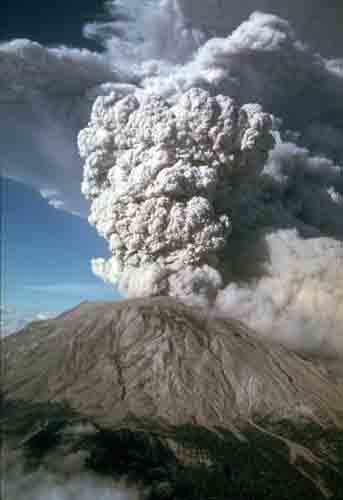Volcanic Ash sample Raw Minerals Lapilli Pumice Lava Bombs Stones Rocks for Collection.
Rare collection of of extremely fine grained Volcanic Ash from the May 18 1980 eruption of Mount St. Helens, taken on June 12 in the town of Forest Grove (Oregon, Washington County) 63 miles from the Volcano.
Available on our website, besides ashes, pumice and bombs, also various volcanic rocks, such as Apache Teardrops, sulfur, obsidian, tuff, crystal chalk, etc.
Volcanic ash consists of small tephra, which are bits of pulverized rock and glass created by volcanic eruptions, less than 2 millimetres (0.1 inch) in diameter . Ash is created when the usually violent nature of an eruption involving steam results in the magma and solid rock surrounding the vent being torn into particles of clay to sand size.
Every samples is individually labelled and bagged. The ash itself is contained in a series of flip top vials so thay can easily be removed if required for study under a microscope.
As with all volcanic ash, the material should be handled with care and not inhaled.
Mount St. Helens is an active stratovolcano in the state of Washington (USA), on the Pacific coast.
It takes its English name from British diplomat Lord St. Helens, a friend of explorer George Vancouver who surveyed the area in the late 18th century. The volcano is located in the Chain of Waterfalls and is part of the Volcanic Arc of the Falls, a segment of the Pacific Fire Belt that includes over 160 active volcanoes.
From a strictly geological point of view, Mount St. Helens is a volcano characterized by explosive activities such as Vesuvius, with the typical products that characterize these eruptions: volcanic ash, tephra, deposits due to directional explosions, pyroclastic flows.

Until a few years ago little or nothing was known of its eruptive activity, as the most precise geological data date back to just 20,000 years. From about 20,000 years ago, Mount St. Helens was characterized by few eruptive phenomena interspersed with periods of rest ranging from 5,000 years up to a minimum of 200. And it is just about 180 years after the last eruption that the volcano begins to show signs of awakening. It is known in particular for its catastrophic eruption of 18 May 1980, which occurred at 8:32 local time, the most deadly and economically most destructive volcanic event in the history of the United States.
Without any further warning, a magnitude 5.7 earthquake shakes the volcano. The north flank comes off and landslides downstream and at the same time an explosion causes a cloud of incandescent ash that moves at a speed of over 100 kilometers per hour destroying everything in its path. A dense, black cloud rises up in the stratosphere with explosions and lightening and obscures everything within a radius of 200 kilometers from the volcano. The seismic activity continues until 8:44 and then stops until 12:00. The eruption continues until about 6:30 pm.
At the end of the eruption the volcano appears completely destroyed: about 2.5 cubic kilometers of its north flank have disappeared with the landslide and the summit has lowered by 350 meters; a large horseshoe-shaped crater opens to the north and about 0.2 cubic kilometers of magma have erupted and destroyed 27 square kilometers of secular forest. In the first eruption of May 18, 57 people died. In the following days the powders emitted by the volcano are transported at a great distance and are deposited forming thick coulters, damaging the crops even 2500 kilometers away, and for weeks are observed by the satellites in the upper layers of the atmosphere.
On the night between 24 and 25 May a new explosive eruption occurs with the emission of large quantities of ashes and pumice for about seven hours, accompanied by a swarm of deep earthquakes.
On 12 June at 7.45 pm, preceded by several hours of increased harmonic tremor, a new explosive eruption lasting ten hours took place.
On 22 July, a new eruption changes the type of events: from that date eruptions do not occur uninterruptedly for hours, but in small impulses interspersed with many hours of distance, a sign that the supply of magma is decreasing.
Two more explosive eruptions take place on 7 August and 16 October. After the last one, a lava dome is permanently formed inside the crater, which is fed episodically in the following years.



